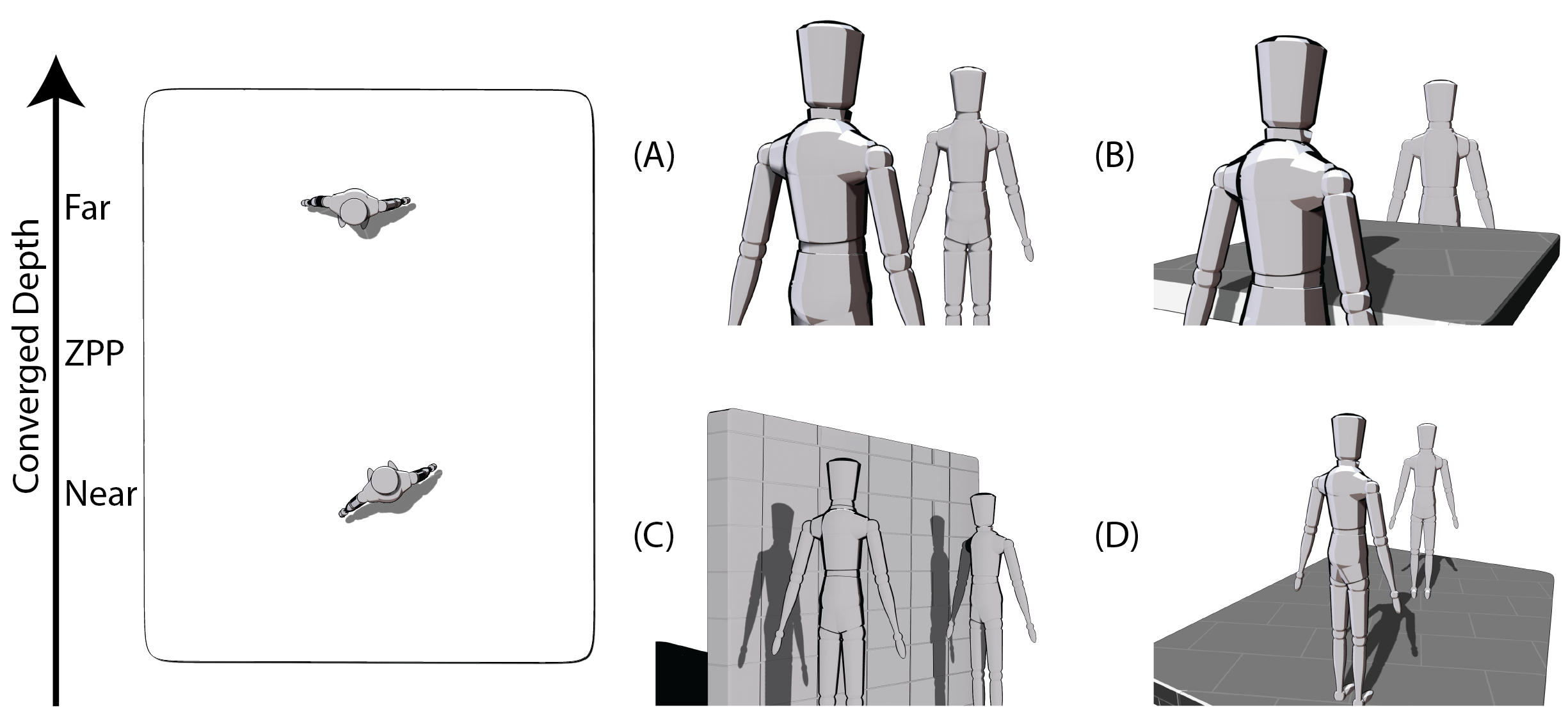Alternating Attention in Continuous Stereoscopic Depth
In this paper, we explore a hypothesis that placement of visual cues within a scene can assist a viewer in the process of maintaining the V/A decoupling.
August 8, 2014
ACM Symposium on Applied Perception in Graphics and Visualization (ACM APGV) 2014
Authors
Steven Poulakos (Disney Research/ETH Joint PhD)
Gerhard Röthlin (Disney Research)
Adrian Schwaninger (University of Applied Sciences Northwestern Switzerland)
Aljoscha Smolic (Disney Research)
Markus Gross (Disney Research/ETH Zurich)
Alternating attention in continuous stereoscopic depth
The decoupling of eye vergence and accommodation (V/A) has been found to negatively impact depth interpretation, visual comfort, and fatigue. In this paper, we explore a hypothesis that placement of visual cues within a scene can assist a viewer in the process of maintaining the V/A decoupling. This effect is demonstrated through the use of a continuous depth plane that connects spatially distinct scene elements. Our experimental design enables us to make the following three contributions: (1) We show that a continuous depth element can improve the time it takes to transition visual attention in depth. (2) We observe that the subjective assessment of fatigue emerges before we detect a quantitative decline in performance. (3) We aim to motivate that stereoscopic 3D content creators may learn scene composition, framing, and montage from visual psychophysics.

